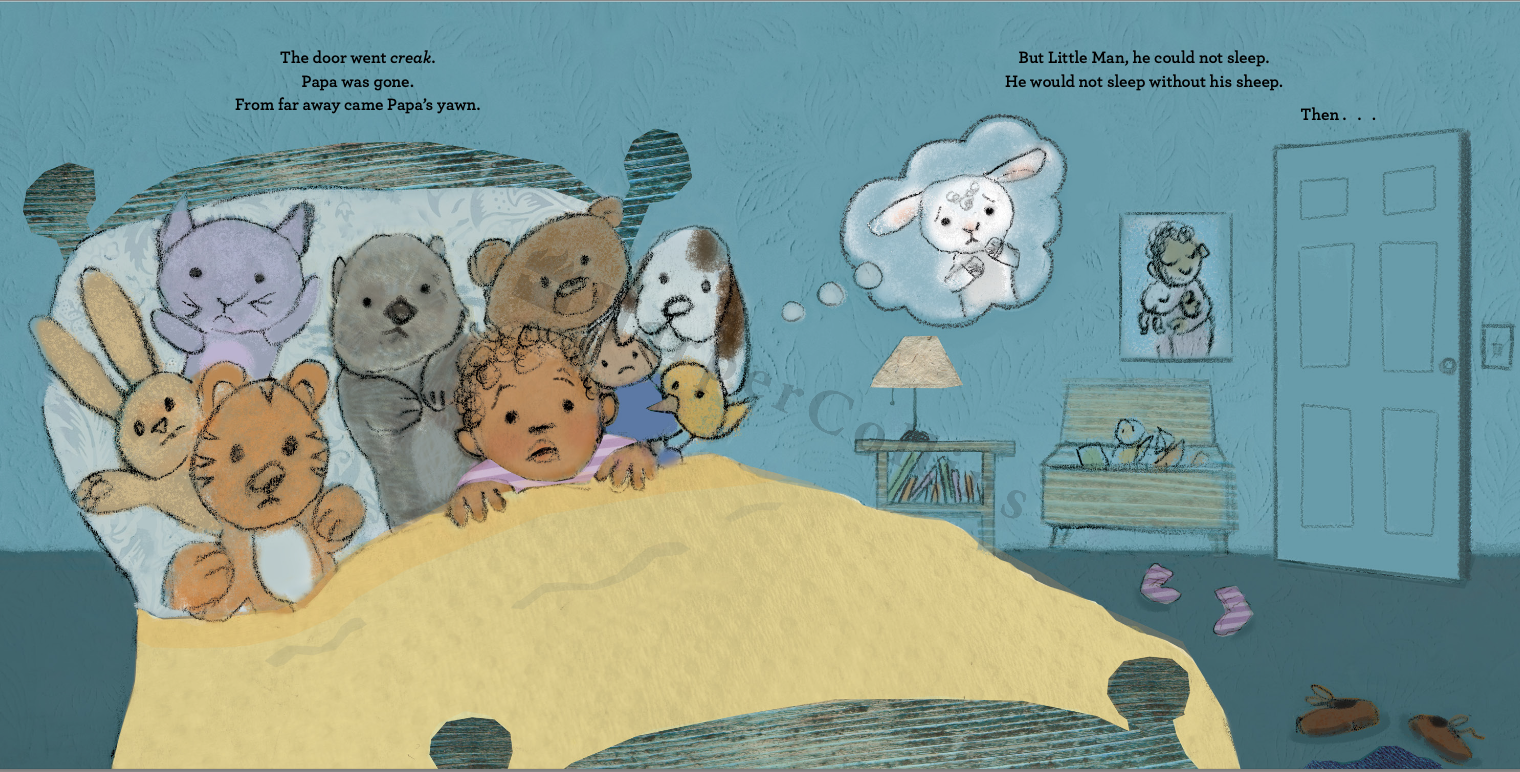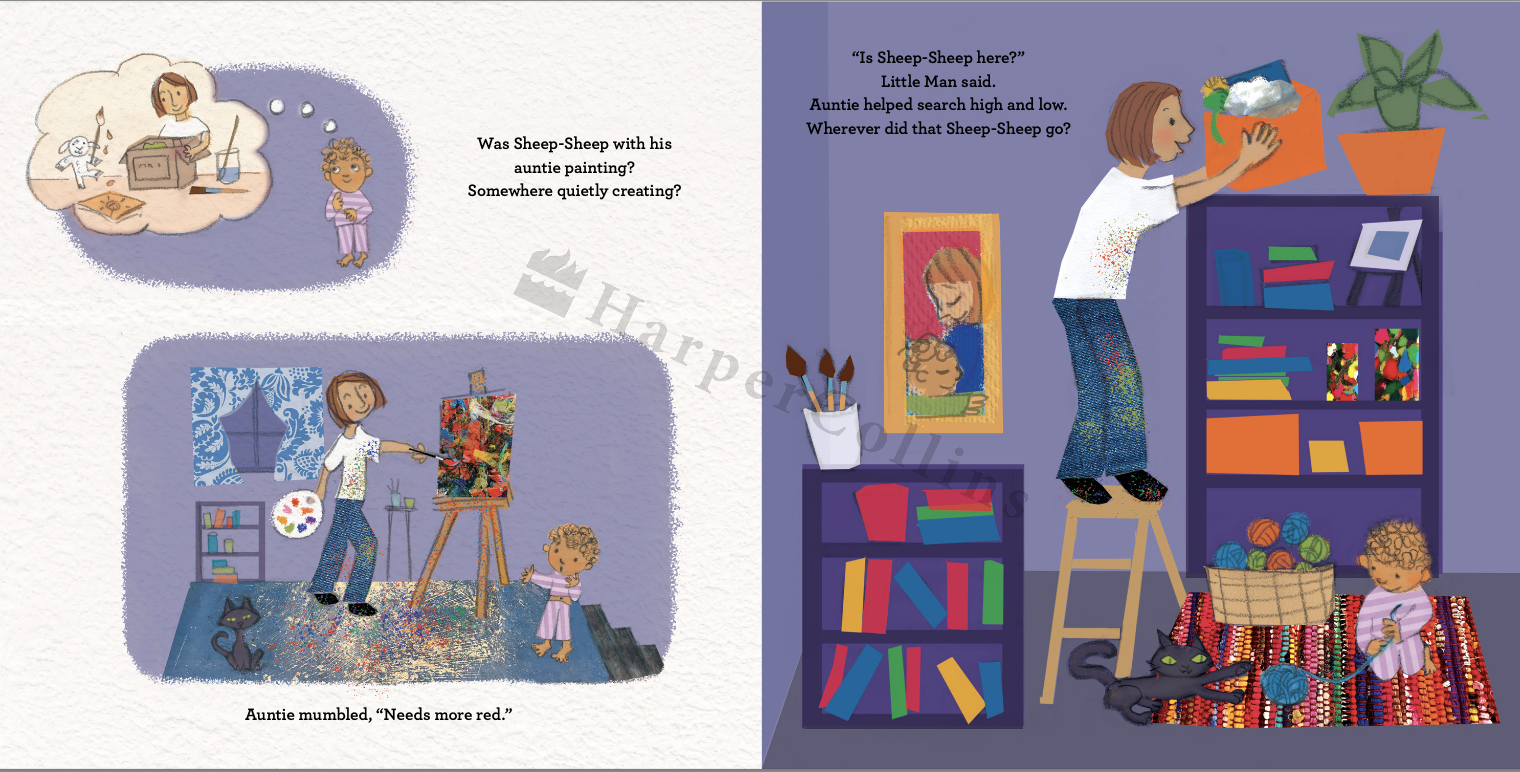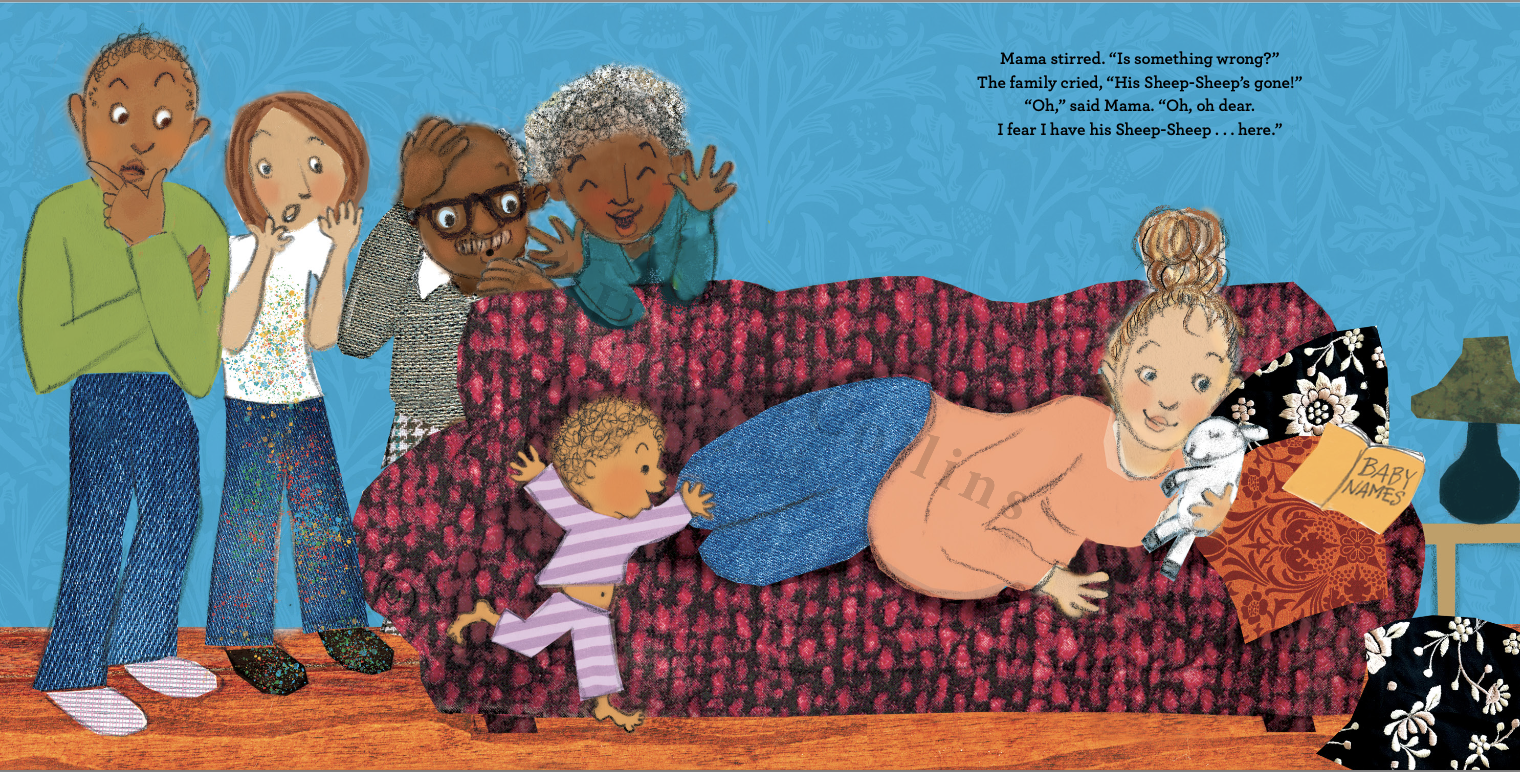Goodnight, Little Man - Illustrator’s Note: from pencil to bold, from soft to full, from child to man
This illustrator’s note for Goodnight, Little Man was written by Ezra Jack Keats Award Winner Heidi Woodward Sheffield:
When I initially read Dan’s story, I was amazed. It’s the first picture book I’ve read which portrays a parent losing patience, showing his humanity, and having a meltdown. Of course, the child follows in quick form, mirroring Dad. But it also showed Papa’s regret, and his son Little Man, wise beyond his years, offering forgiveness in the form of Sheep-Sheep, which was especially touching.
At that moment, I knew my biggest goal would be having viewers see themselves in this story—that none of us is perfect, neither parents nor children. And it’s what we do in those moments of big emotion, how we process it and how we grow as a result, that’s important.
The artwork needed both a softness that could encompass the warm, sweet moments and a vitality of line, a strong edge as the emotions strengthened into the meltdown stage. That’s why I chose to use traditional pencil drawings in the book. Graphite has a warmth and immediacy that I haven’t been able to express digitally. I wanted the art, especially in the emotional scenes, to have a freshness that jumped off the page and into the viewer’s heart.
And since collage is the way I process the world, I layered textures digitally under the pencil drawings. It was so gratifying to find old photos that added additional life and depth to GOOD NIGHT, LITTLE MAN. The opening spread of Little Man in his family’s apartment has all sorts of tiny details and really sets the stage for each character, from Auntie the artist creating on the top floor, to pregnant Mama reading a book of baby names, to Little Man and Papa brushing their teeth. I sprinkled Easter eggs like this throughout the book that kids might enjoy again and again. I also didn’t realize it at the time I created Little Man’s pajamas, but they are purple, which is an emotional color and also one of peace and compassion, which fits Little Man as he comes to offer Papa forgiveness.
One additional way I use collage in my books is to add a story behind the story. Since this book featured a multicultural family, I wanted to instill a sense of history. On the spread where Little Man is sneaking out of his bedroom and tip-toeing downstairs, he passes antique pictures of his ancestors, along with a picture of his own blended family.
The wall color is blue - calm, secure, and tranquil. It’s subtle, but the wallpaper has oak leaves, branches, and acorns… the family tree. Little Man’s family is a blend, just as these pencil sketches and collages are.
During the meltdown, we see the oak tree wallpaper turn thorny and the colors turn hot—orange and red with the double meltdown of father and son. When things are resolved, the colors are back to blues, calm and cool. I also used the juxtaposition of big Papa and Little Man mirroring each other in back-to-back spreads. Children reflect what they see, especially when it comes to emotions. And adults turn into children when they have tantrums of their own.
Dan and I also really wanted to show both Papa’s parents and Mama’s sister living together as a blended and unified family, sharing their lives with love. Little Man’s grandparents and Auntie help move the story along as they search for the missing Sheep-Sheep.
An interesting fact: I usually take reference pictures of people who resemble the characters in my imagination for a picture book. But it was during Covid, so that was not a possibility. I drew some pictures from my imagination, but they never seemed quite right.
Then one day, Dan shared some family pictures. I was smitten! Here was the real Little Man, Haven in action, Dan doing Dad things with the kids and his wife Heather, beaming and pregnant with the family’s fifth child.
Mama’s pregnancy was an important detail. Showing her with a new baby on the horizon gave subtext to Little Man’s emotional state. He wasn’t just uptight because Sheep-Sheep was missing. His was also anxious because he would have a new sibling soon and, therefore, felt lost and unloved by his family.
Finding Sheep-Sheep on the couch with a sleepy and very pregnant mom was also a sweet detail that grounded the high emotions of the previous pages. It was also a pivotal moment of Papa realizing his mistake with Little Man.
Papa’s look of disbelief when he realizes he was wrong is one I return to again and again because I recognize it in myself. Sometimes as parents we are so sure we’ve got the narrative right, when in reality we often don’t.
— Heidi Woodward Sheffield (heidibooks.com)



